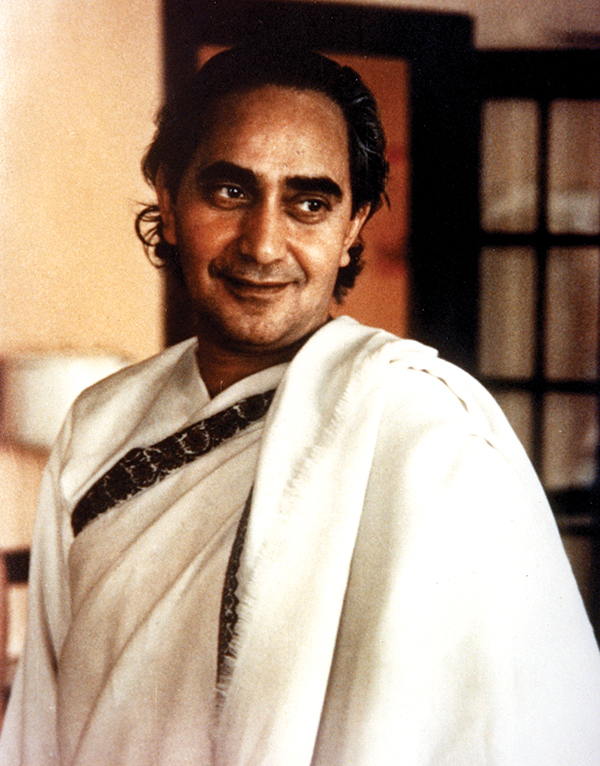The twin side of vairagya is abhyasa. Abhyasa means practice and practice means discipline and attention. The two are linked as night and day. A person cannot develop nonattachment or vairagya without abhyasa. Similarly, abhyasa without vairagya amounts ultimately to a waste of time.
These two, nonattachment and practice, are the most powerful vehicles for spiritual progress. Separately, they are like a boat with one oar. There is movement, but little progress.
In the preceding chapters the preliminaries to a spiritual life were discussed. These steps constitute the broad strokes on the canvas of your spiritual life. They are the essential background. The more refined strokes, from which the sharpened images and details come, are created by abhyasa or sadhana. Sadhana is spiritual practice, and usually refers to the specific practices of a tradition—hatha yoga, pranayama or breathing exercises, repetition of mantra, and so on. Abhyasa is a more encompassing term that includes not only practice of specific techniques, but the overall goal of life and the application of belief systems. In this book the two terms are used almost interchangeably.
To begin understanding abhyasa remember you are the citizen of two worlds—the outer world of family, community, and dharma, and the inner world you wish more fully to explore. Abhyasa begins with balancing these two worlds. Living in the external world, learning and growing, yet remaining above so the whispers from the inner world can be heard, is the sadhana of a person’s life. When a balance is achieved between the inner and outer worlds, the outer world can be used to gain access to the inner, and the inner world facilitates a richer and fuller life in the outer world.
Jesus was completely balanced. He was in the world but above it. He was both human and divine, as all human beings are. His great importance as a public spiritual figure was to show humanity that they are divine because they are human, and human because they are divine. Jesus demonstrated his divinity out of full expression of his humanity.
As the Kathopanishad suggests, humans are not so much bodies with souls as they are souls with bodies. The divine is immanent in humans and humans are inherently divine.
Living a spiritual life does not require escaping from the world. It is not useful to look at the flaws of the world and say it is ugly and sinful. Turning away from the world will not lead to spiritual happiness. Live in the world. By living fully in the world with all of its apparent imperfections one can attain spiritual perfection.
Along with the effort toward balance and non-attachment, practice selflessness. Selflessness is an art that requires much practice to perfect. Strength, non-attachment, love, and fearlessness grow from the practice of selflessness.
Make it a part of your daily life to do things for others without anyone knowing. To be selfless and attentive toward others is not so much an effort as it is a very natural way of being. At the same time, do not forget yourself. In the observances of yoga the first principle is ahimsa, non-harming. This principle is not meant to be applied only to others. Ahimsa should first be applied toward yourself. You should not harm yourself or allow yourself to be harmed by others. Be sensible in your non-attachment and love. While it is not helpful to be ego- or me-centered, it is also not beneficial to be exclusively you-centered. The Upanishads teach that all is One.
Approach your life wholeheartedly. Whatever you do, do with your whole heart and fullest attention. When you are with your children, be with your children, not your work. When you are at work, be with your work, not your children. Be in the moment at hand, not in the moment or day that has passed, or in the moment or day yet to come.
Be decisive. Exercise your buddhi, that aspect of your mind that chooses, makes judgments, and decides. It is a very powerful part of mind. Make the best decision you can, and take action accordingly, leaving the outcome up to the divine force. Choose your friends, activities, and livelihood wisely. All of them should be compatible with your higher goals.
Be gentle with yourself. This is a long and difficult journey. Your goals should be reasonable so as not to create frustration and disappointments. Be willing to crawl before you walk. Perfect each skill as you move along on the journey, and forgive yourself when you stumble, or even slide backward. Setbacks are temporary and meant to be instructive. Let yourself slide backward, observe what has occurred, get back on your feet, and move forward.
Reprinted from Sacred Journey, an HIHT publication.

